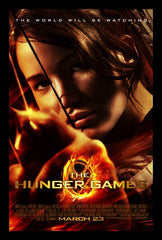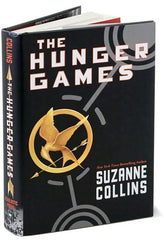The Hunger Games: A Change of Perspective
by Bethany Wagner
“When I wake up, the other side of the bed is cold. My fingers stretch out, seeking Prim’s warmth but finding only the rough canvas cover of the mattress. She must have had bad dreams and climbed in with our mother. Of course, she did. This is the day of the reaping.”
And with these words, protagonist and narrator Katniss Everdeen opens the first book of The Hunger Games trilogy by Suzanne Collins, the dystopian series that took the young adult world and beyond by storm in 2008. Four years later, the story of Katniss, Peeta, and the oppression faced by the citizens of Panem reached the big screen in a highly anticipated, wildly successful film adaptation. This year, young and old alike look forward to November 21, the premiere of the third film installment Mockingjay: Part 1.
The first Hunger Games film is unique in that it was directly adapted by its original author. Other screenwriters took over for the subsequent films, but Collins had a heavy hand in guiding plot and dialogue choices, as well as other details. As such, the films remain mostly faithful to the stories of the books.
However, The Hunger Games provides a prime example of the unique limitations both books and films present to the creators and audiences/readers in regards to perspective.
“Nervousness seeps into terror as I anticipate what is to come,” says Katniss before she enters the brutal trials of the Hunger Games in the first book. Written solely in first person, the entire trilogy invites the reader to step into Katniss’ head, feel her emotions, understand her problems, and view events from her perspective. The fourth wall is broken. Katniss is talking to you, as if you are an invisible presence alongside her, telling you her actions and experiences. For example, while in the arena, she dreams of her sister and says, “I try to hold on to the peaceful feeling of the dream, but it quickly slips away, leaving me sadder and lonelier than ever.”
But in one sense, this does pose some limitations. The readers know and feel what Katniss knows and feels—and nothing else. They walk in Katniss’ shoes, seeing what she sees—and nothing else. Everything is a mystery to the reader until Katniss uncovers its secrets.
Meanwhile, a film provides much more freedom in this area. The fourth wall firmly in place, Katniss no longer speaks directly to us, and we see her story played out before our eyes. But we also see President Snow enjoying an extravagant meal with his granddaughter, contrasting the life of the elite with the struggles of the poor. We see the games control room, where officials frantically work over screens controlling the lives of Katniss and the other tributes.
We see Katniss’ family and friends at home, anxiously watching her fight for her life on a projector screen. Sitting in the dark theater or on the couch at home, we miss the depth of Katniss’ emotions and the closeness of following her thoughts for three books. But as passive spectators to the film version, we suddenly know more than the heroine and follow the story with a wider understanding. Together, the book and film form a comprehensive duo allowing readers and audiences to truly experience all facets of this powerful story about life, death, and compassion against all odds.
Check back next Thursday as we travel to the realm of Middle Earth, exploring J.R.R. Tolkien’s The Hobbit and Peter Jackson’s cinematic interpretation.
--
Collins, Suzanne. The Hunger Games. New York: Scholastic, 2008. Print.
Book cover (c) Scholastic Press.

